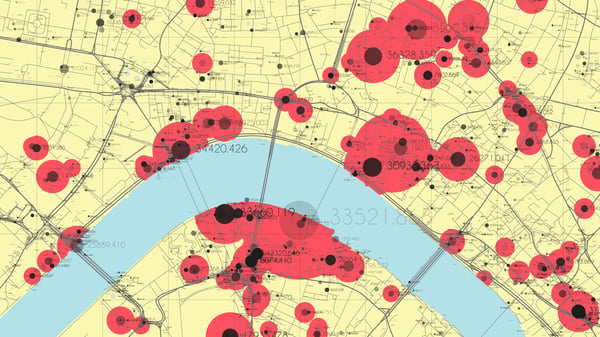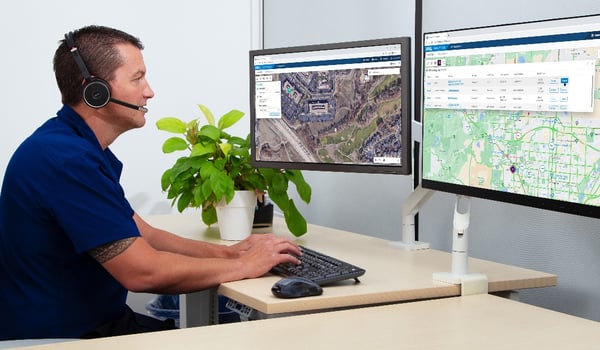4 Must-have Data Points for Dispatch-Billing Alignment and Maximum Reimbursement
Warp Speed to a Greater Safety Culture
While preparing for an upcoming presentation, I found myself daydreaming about my favorite childhood TV series,-the original Star Trek
Was this information valuable?

While preparing for an upcoming presentation, I found myself daydreaming about my favorite childhood TV series,-the original Star Trek. When I was a kid, I would rush through my paper route so that I could get home and watch it. I grew up watching Captain Kirk (William Shatner) and the crew of the USS Enterprise fly through space. Every show started with the Enterprises mission statement by Captain Kirk saying:
”Space: the final frontier. These are the voyages of the starship Enterprise. Its five-year mission: to explore strange new worlds, to seek out new life and new civilizations, to boldly go where no man has gone before.”
Patient Safety: A Strange New World
I started to make a connection between Star Trek and the topic of a safety culture. The series was rich in symbolism and offered opportunities to explore the topic of patient safety. In the EMS culture, patient safety is a strange new world. The brave men and women of EMS must boldly approach this subject.
For many of us, patient safety seems strange and unknown-like exploring a new planet. The crew of the Enterprise faced many unusual and stressful circumstances. It reminds me a lot of arriving for a call. Often we show up with only scant information until we actually arrive on scene and begin assessing the situation. We want to do the best for our patient, but how do we define patient safety and measure it?
The crew of the Enterprise was able to meet those challenges because their organization, leaders, and professional culture supported them in their mission. In EMS are we getting the support that we need in our mission? Our mission may be considered patient safety.
The Role of Patient Safety Training
Have we been trained in the complex world of patient safety? Do we know the definition of patient safety and are we interested in measuring it as well as learning how to prevent mistakes from happening?
The Center for Patient Safety defines patient safety as the freedom from accidental or preventable injuries produced by medical care, and activities to avoid, prevent or correct adverse outcomes which may result from the delivery of health care. As such, it transcends across every aspect of healthcare delivery and requires a collaborative approach among individuals and organizations with a vested interest in improving patient safety and reducing harm.
Wow-that is quite a long explanation! So what does EMS need in order to prevent accidental or preventable injury in the scope of our work? We need organizational systems that promote a just culture, leadership, team work, great communication skills, data and proactive approaches in order to be successful in EMS in the 21st century.
When Captain Kirk and the crew arrived on a new planet, he did not offer them negative words and tell them not to screw up. No, he looked out for his crew by giving them the necessary tools and knowledge to be successful. His crew knew what to do to protect themselves and each other. This was their safety culture which is in turn part of practicing patient safety.
Patient safety systems based on improving the safety culture and system designs help us to take care of ourselves and our patients. It also creates a positive and just culture or a model of shared accountability in each EMS organization.
Captain Kirk led the crew and developed the culture on the ship. Today, in EMS, we need leaders who will do the same. Just as Star Trek had a training academy to learn their skills, we can start to implement proven methods that are found across the continuum of health to improve safety culture. This includes measuring our safety culture and then developing a plan with goals to improve the culture.
I hope that you will join me and start building a safety culture in EMS at warp speed. Be bold and go where no one has gone before!
If you want to learn more, visit www.centerforpatientsafety.org or email me directly at lvarner@centerforpatientsafety.org.
Related Posts
How EMS Agencies Can Reframe Need and Refocus Resources With Geospatial Analytics
How To Minimize Radio Chatter and Reduce Guesswork With Smarter Dispatch Resource Management
ZOLL Pulse Blog
Subscribe to our blog and receive quality content that makes your job as an EMS & fire, hospital, or AR professional easier.
ZOLL Pulse Blog
Subscribe to our blog and receive quality content that makes your job as an EMS, fire, hospital, or AR professional easier.




